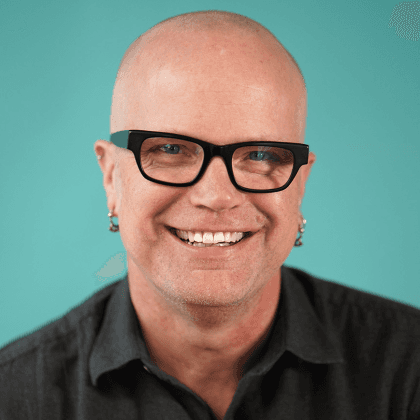
I like focus groups
Not because I find them scientifically effective, but because I’m fascinated by the people. During these long sessions I find myself wondering about the participant’s secret agenda. Are they in a state of mind that represents where they will be when they see our advertising in the real world? Is their cousin in marketing? Maybe that’s why they feel qualified to tell us what the strategy should be? Or do they just sense the power and voice they’ve been given?
For decades, agencies large and small have been training clients to abdicate decision-making. Nearly every agency you can think of walks into their client’s conference room (or more likely Zooms in) with a three-headed monster in tow: three options with not much of a choice. It’s time to reject that and expect your agency to get it right, once. Not right once and wrong twice.
The illusion of choice feels empowering
Think about it. You’re asking your agency to waste 66% of their time, energy and budget on concepts you have no intention of using. The Frankensteining of ideas and waste of time aren’t even the worst parts. It’s that your agency only spends a third of their time on the right concept—the recommendation. The rest of their efforts go into playing the game. You know the one. There are several variations of this game of “choice,” but here’s a common one, The Straw Dog.
Campaign A is the safe bet to get you nodding. Campaign B is the out-there concept that’s just meant to make Campaign C (the recommendation) safe by comparison. A lot of agencies spend as much time strategizing on how to force your choice as they do on the actual strategy. Everyone plays the game, and nobody talks about it.
“
...expect your agency to get it right, once. Not right once and wrong twice.
Escape the false choice trap
Demand One Idea. I know this may sound counter-intuitive or even crazy. But starting in 2017, we tossed aside the multi-concept approach at Shinebox. We may explore many strategies, but we present one creative concept. We’ve iterated and improved our method over time. We call it the BrandBuilder, and it works.
It works because we spend more time in strategy—what we call the Brand Story or the brief. It may take several versions, but we don’t stop until we have alignment with the client, right down to the legal department if need be. This preserves dollars and the creative energy of the agency. We can then invest in a richer creative product because we’re focused on a single concept. This concept can be delivered with a bolder vision and with more activations—which are much better suited to qualitative comms checks than campaign directions.
It takes confidence
The less confidence you have in your agency, the more ideas you’ll want to see. The less confidence you have in your organization’s ability to make a decision, the more likely you’ll outsource those decisions to testing—the results of which are often inconclusive.
I have two suggestions for building confidence. Firstly, move faster. The more time you spend developing multiple ideas and testing them — the more pressure and external validation you’ll want. Plus, markets and culture are moving faster than ever.
Secondly, don’t let mistakes become toxic. If your culture doesn’t tolerate mistakes, there will be no risk taking. Multiple creative options inevitably lead teams to mitigate risk by choosing the option perceived as safer, without considering that maybe the riskier option is the more conservative one. Risk is foundational to building a brand and a business.
There can only be one
The One Idea is better financially for our clients. And we’ve never had a client ask for the “other concepts.” We’ve seen double digit increases to a client’s market share in a single year. And we’ve seen continued annual growth after five years.
We have clients who recommend us to other marketers. Not only because of their success, but also because they’ll never have to choose from three incomplete concepts again. Many smart and creative people are spending two-thirds of their career on work that will die as an animatic in an office park outside of Pittsburgh. There’s a better way. Try it, and tell us all about it.
Connect with us
Disrupting for good.
Helping brands disrupt the status quo — for the better health of individuals, communities and our environment.
